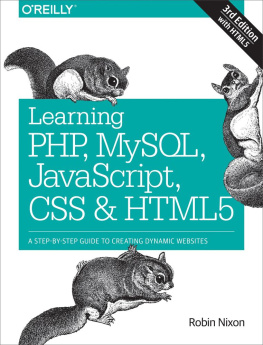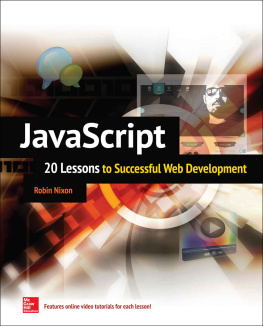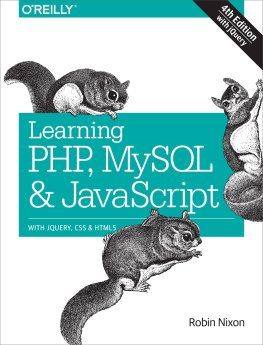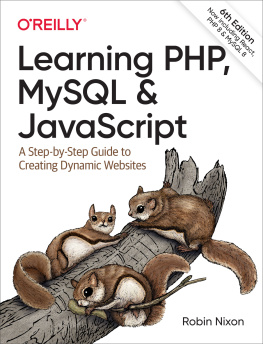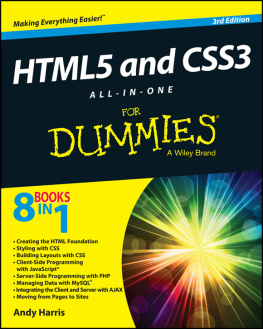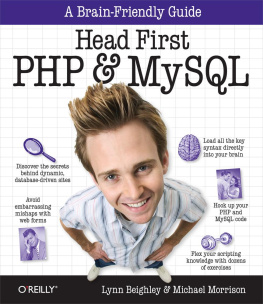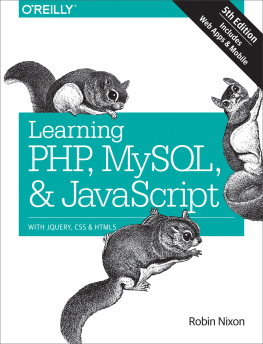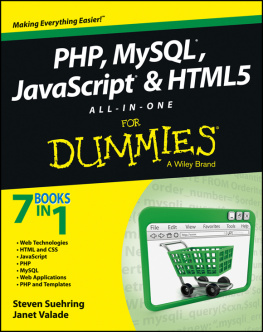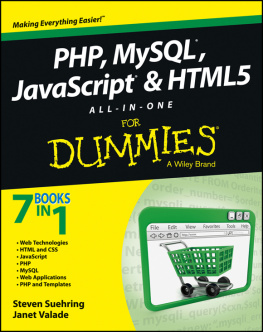Robin Nixon - Learning PHP, MySQL, JavaScript, and CSS: A Step-by-Step Guide to Creating Dynamic Websites
Here you can read online Robin Nixon - Learning PHP, MySQL, JavaScript, and CSS: A Step-by-Step Guide to Creating Dynamic Websites full text of the book (entire story) in english for free. Download pdf and epub, get meaning, cover and reviews about this ebook. year: 2012, publisher: OReilly Media, genre: Computer. Description of the work, (preface) as well as reviews are available. Best literature library LitArk.com created for fans of good reading and offers a wide selection of genres:
Romance novel
Science fiction
Adventure
Detective
Science
History
Home and family
Prose
Art
Politics
Computer
Non-fiction
Religion
Business
Children
Humor
Choose a favorite category and find really read worthwhile books. Enjoy immersion in the world of imagination, feel the emotions of the characters or learn something new for yourself, make an fascinating discovery.
- Book:Learning PHP, MySQL, JavaScript, and CSS: A Step-by-Step Guide to Creating Dynamic Websites
- Author:
- Publisher:OReilly Media
- Genre:
- Year:2012
- Rating:4 / 5
- Favourites:Add to favourites
- Your mark:
Learning PHP, MySQL, JavaScript, and CSS: A Step-by-Step Guide to Creating Dynamic Websites: summary, description and annotation
We offer to read an annotation, description, summary or preface (depends on what the author of the book "Learning PHP, MySQL, JavaScript, and CSS: A Step-by-Step Guide to Creating Dynamic Websites" wrote himself). If you haven't found the necessary information about the book — write in the comments, we will try to find it.
Carefully paced for non-programmers, this second edition of the top-selling guide to web development now also provides an extensive introduction to CSS, and benefits from reader questions and suggestions about the first edition, making the new edition even easier to follow and more information-packed than ever.
Plus, to ensure your have understood all the main points, youll practice what youve learned with review questions at the end of each chapter, and theres even a sample social networking platform built with the elements introduced in this book.
Learning PHP, MySQL, JavaScript and CSS will enable you to:
- Understand PHP up to an intermediate level, including the basics of object-oriented programming
- Master MySQL, from database structure to complex queries
- Create web pages with PHP and MySQL by integrating forms and other HTML features
- Learn about JavaScript, from functions and event handling to accessing the Document Object Model
- Pick up the basics of CSS (and CSS3) and learn how to use it to create compelling and dynamic web pages.
- Find out how to manipulate CSS properties directly from JavaScript
- Make Ajax calls and turn your website into a highly interactive environment
- Upload and manipulate files and images, validate user input, and secure your applications
- Bring all these technologies together to create a social networking site
Robin Nixon: author's other books
Who wrote Learning PHP, MySQL, JavaScript, and CSS: A Step-by-Step Guide to Creating Dynamic Websites? Find out the surname, the name of the author of the book and a list of all author's works by series.



